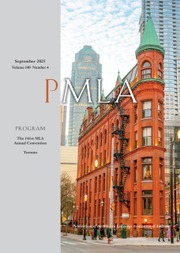No CrossRef data available.
Article contents
Fidelity, Betrayal, and Desire: Translating La princesse de Clèves
Published online by Cambridge University Press: 12 September 2023
Abstract
While it no longer seems possible to speak of an invisible narrator of La princesse de Clèves, the 1678 historical novel by Madame de Lafayette, the notion of an invisible translator defines the work of late-twentieth-century English translations of the novel. According to this view, the translator should remain unseen by the reader and therefore “faithful” to the original text, so as not to upset the interpretive possibilities that Lafayette offers. In fact, however, the translator's infidelity is both necessary and vital to interpreting eros in La princesse de Clèves. The novel itself makes infidelity a form of insight, and Lafayette's vocabulary forces English translators into situations where any choice can be simultaneously unfaithful and correct. Like the character of the princess, translators have conflicting fidelities that should be made visible to fully reveal the richness of the novel.
Information
- Type
- Essay
- Information
- Copyright
- Copyright © 2023 The Author(s). Published by Cambridge University Press on behalf of the Modern Language Association of America

